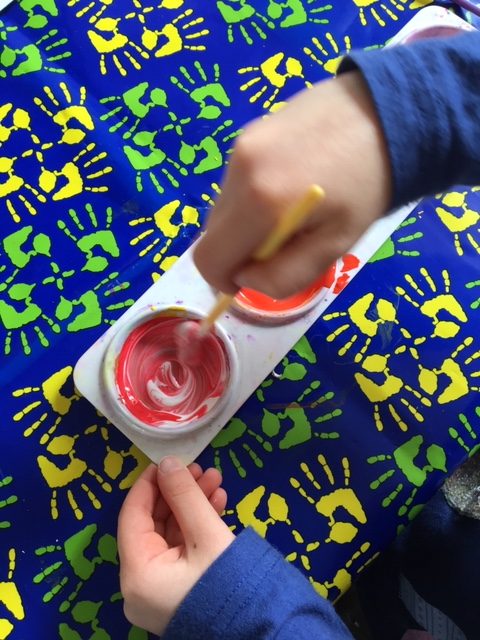Rainbows and Waves for Grey Days


In this table top post, AccessArt team member Rachel Thompson creates two simple rainbow themed art paintings that are designed to say a warm “Hello!” to our friends and neighbours that we are not currently socialising with but want to stay connected to.
When I read that children and communities in Italy were painting rainbows to stick on their windows as a way to send a positive message to neighbours and loved ones, I wanted to do the same in our community! We live in a small network of streets, where there are lots of families with children all part of the same school and creating something collaborative, yet remote, seemed like an appropriate idea for these strange times.
This activity was run for my reception aged daughter and is more aimed at the EYFS group – but there’s no reason older children couldn’t enjoy it, and certainly appreciate the concept!
You will need:
- Paper and/or card
- Pencil
- Paints (rainbow colours) and brushes
- Scissors
- Glue
Step one:
Talk about rainbows and how they are formed. Show some pictures of them online and ask the children to observe the colours and formation. Then, ask them to draw a rainbow outline in pencil. Younger children will produce something a little wobbly- but that’s fine! Just mention they will need enough space in between the lines to fill it with colour!

Next, choose the colours. This is a good opportunity to talk a bit about colour mixing which is introduced to most reception aged children at school. We mixed red and white to create pink – and red and yellow to create orange.


Once you have all your colours in front of you, it’s time to paint the rainbow!

This part is quite good opportunity to simply explain how different strokes can be made with a paintbrush. Young children sometimes have a tenancy to ‘scrub’ back and forth with a brush, but with a reminder to take their time, to hold the brush firmly nearer its lower end and align brushstrokes in the same direction, they can really begin to learn about brush control and dexterity.

Another useful thing to talk about to extend their learning is how colours look side by side and how complimentary colours work. For example, I encouraged my daughter to not bunch red, orange and pink together and intersperse them with more blue tones.
Once the colours have been added you could offer a choice as to what to fill the background with, such as clouds, sky, patterns, collage. We simply painted ours blue!
Waving rainbow hands
To continue the theme of staying connected with our neighbours we next moved on to creating a card for a friend featuring waving rainbow hands. This is a great opportunity to encourage some more messy work and the feeling of paint on our hands!
Using the same paints mixed up for the rainbow, begin painting rainbow stripes across your hand.
Place the hand onto a fresh piece of thick paper or card.
Make one, or a patter of hand prints.
You can invite children to paint your hand too!
When the hand prints are dry, draw around the outline in pencil before cutting them out. Young children may need support with this but good to give them a go!
Next, talk a bit about composition and where the hands could be placed on the backing card to look like they are waving. Then add glue.
We posted our card as a way to say hello to a good school friend and neighbour and we pinned the rainbow painting up in our front window to spread a bit of colour and hope to our neighbours as they pass by. Several other families are doing the same in the area and so we can all feel a sense of connection despite not able to spent time together!













